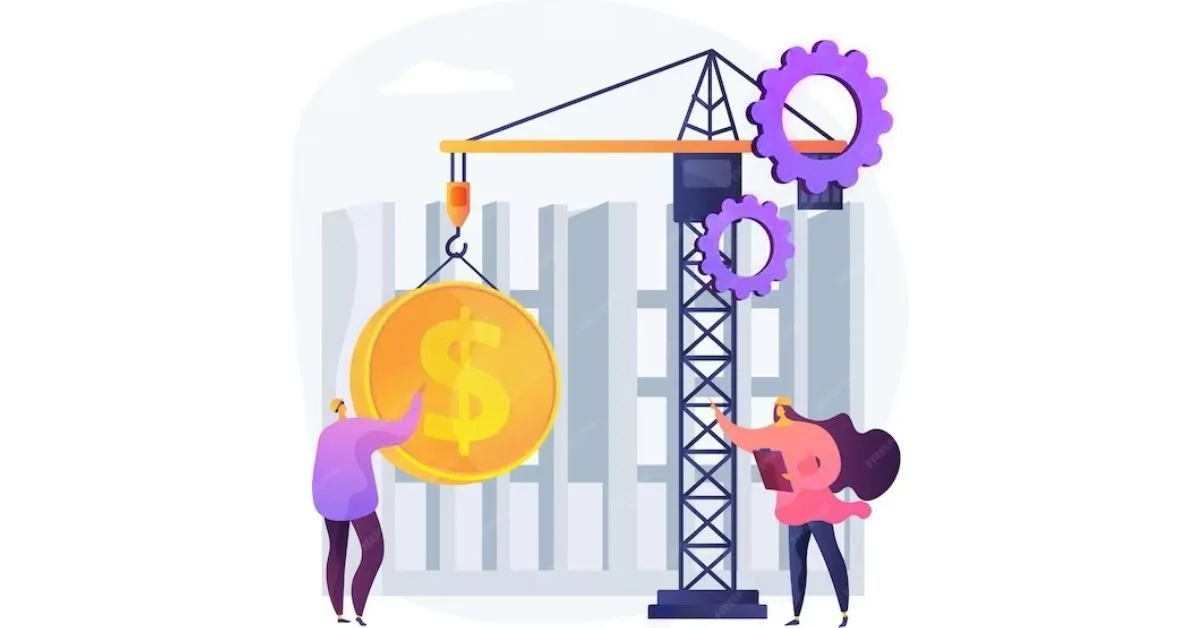BUSINESS
How to Harness Continous Improvement to Drive Long-Term Business Success

Staying competitive is tough, especially when markets shift and customer needs evolve. But there’s one approach that can help businesses keep up and even thrive—continuous improvement. Rather than waiting for problems to pile up or relying on big, sweeping changes, continuous improvement focuses on making small, incremental tweaks that add up over time. It’s like fine-tuning an engine so it runs more smoothly every day.
Ready to learn how this can drive long-term success for your business?
Let’s dive in.
Understanding Continuous Improvement
So, what exactly is continuous improvement? At its core, it’s a mindset that embraces constant, small changes that build up to big results. Instead of overhauling entire processes in one go, you look for everyday ways to improve—whether that means streamlining a workflow, reducing waste, or enhancing customer interactions. It’s all about progress, not perfection.
Businesses that adopt this approach can see all sorts of benefits, like boosted efficiency, lower costs, and happier customers. Think of it as a way to keep your business agile and ready to adapt, no matter what challenges come your way.
Create a Culture of Continuous Improvement
One thing to always keep in mind: the continuous improvement process is very much about the people involved in your organization. To make it work, you need a company culture where learning and growth are part of the daily routine. This means encouraging employees to speak up when they see ways to do things better and rewarding them for thinking creatively.
Leaders play a huge role here. When they model a willingness to learn and adapt, it sets the tone for everyone else. Regularly hold brainstorming sessions, ask for feedback, and let your team know their ideas are valued. A culture of improvement doesn’t happen overnight, but when you make it a priority, it becomes part of your business’s DNA.
Implement Continuous Improvement Processes
There’s no one-size-fits-all approach to continuous improvement. Instead, there are several proven methods you can tailor to fit your business needs. Here are a few popular ones:
- Kaizen: This Japanese term means “change for the better” and focuses on small, daily improvements. It’s perfect for fostering a culture where everyone contributes.
- Six Sigma: A more data-driven method, Six Sigma aims to eliminate defects and improve quality by analyzing processes in detail.
- Lean: Lean focuses on cutting out waste—anything that doesn’t add value to the customer. It’s great for making processes faster and more efficient.
These methods aren’t mutually exclusive. Feel free to mix and match or take what works best for your company. The key is finding a process that encourages regular reflection and action.
Use Continuous Improvement Software for Better Tracking
Keeping track of progress is crucial when you’re making small, ongoing changes. That’s where continuous improvement software comes in. This software helps you monitor your initiatives, track results, and visualize progress over time. Think of it as a digital assistant that keeps your improvement projects on track.
Look for software that offers features like data analysis, feedback loops, and automated reporting. These tools can help you see where you’re making gains and where you might need to make adjustments. Plus, they make it easier to keep everyone on the same page, ensuring that your whole team is moving toward the same goals.
Set Clear Goals and Metrics
If you don’t know where you’re headed, it’s hard to measure success. That’s why setting clear goals is so important in continuous improvement. What do you want to achieve? Faster response times, higher customer satisfaction, reduced production costs? Make sure your goals are SMART—Specific, Measurable, Achievable, Relevant, and Time-bound.
For example, instead of saying, “We want to improve customer service,” set a goal like, “We aim to reduce customer wait times by 20% in the next three months.” This way, you know exactly what you’re working toward and can measure your progress along the way.
Gather Feedback and Adjust Regularly
Improvement is a two-way street. You need to know what’s working—and what’s not—so you can adjust your approach. Regular feedback is key to this. Ask your employees what they think, run surveys, and check in with customers to see how they’re feeling about recent changes.
Don’t be afraid to tweak your approach based on what you learn. Maybe a new process isn’t working out like you hoped, or perhaps there’s an opportunity you hadn’t considered before. The more open you are to making adjustments, the better your continuous improvement efforts will be.
Empower Employees to Drive Change
Your team is on the front lines of your business, and they often have the best insights into what could be improved. Empower them to be part of the change. Create improvement teams or suggestion programs where employees can pitch ideas and take ownership of small projects.
And don’t forget to recognize their efforts. When someone suggests an improvement that makes a difference, make sure to highlight their contribution. It’s amazing how a little acknowledgment can encourage people to keep coming up with new ideas. Plus, it makes employees feel more invested in the company’s success.
Monitor Progress and Celebrate Wins
When you’re focused on continuous improvement, it’s easy to keep looking ahead without stopping to appreciate how far you’ve come. But celebrating small wins is crucial. It keeps morale high and helps your team see that their efforts are making a real difference.
Use visual tools like dashboards to track progress and share updates with your team. Show them how a series of small changes has led to bigger improvements over time. And when you hit a milestone, celebrate it—whether that’s with a shoutout in a team meeting or a small reward. Recognizing progress keeps the momentum going.
Wrapping Up
Continuous improvement isn’t just a business strategy—it’s a way of thinking that keeps your company moving forward, one small step at a time. By building a culture that values learning, using the right tools, and setting clear goals, you can keep refining and adapting your approach. And when you do, you’ll find that even the smallest changes can add up to big results over time.
BUSINESS
Tips for Choosing the Right Yard Waste Dumpster Rental

When it comes to managing yard waste, having the right dumpster rental can make a world of difference. Whether you’re tackling a landscaping project or simply cleaning up your outdoor space, having a convenient and efficient way to dispose of yard waste is essential.
With numerous options available, it’s important to know what to look for when choosing a yard waste dumpster rental.
Here are some valuable tips to help you make the right decision.
Assess Your Needs
Before you dive into searching for a yard waste dumpster rental, pause for a second to think about what you need. Think about how much yard waste you think you’ll end up with and the size of the stuff you’re tossing out. This will give you a good idea of what size dumpster you should go for. Rental services usually have different sizes to choose from, so knowing your needs will make picking one a breeze.
Research Local Providers
Before selecting a yard waste dumpster rental, it’s crucial to research local providers thoroughly. Explore this dumpster rental service in Delaware for insights on what to consider when choosing a rental company near you. Delve into reviews, compare pricing, and evaluate services provided. Ensuring you secure the most advantageous deal available while upholding quality is paramount.
Consider Sustainability
Going green is not only good for the environment, but it can also save you money on your rental. When searching for a yard waste dumpster rental, consider asking if they have environmental considerations in their waste management process or if they recycle the waste they collect. This will not only reduce your carbon footprint but may also result in lower fees.
Consider Pricing and Terms
When you’re checking out various yard waste dumpster rental choices, make sure to think about the pricing and terms. Look for clear pricing options with no sneaky fees, and ask about any extra charges for delivery, pickup, or going over weight limits.
Also, keep an eye on how long you can rent it and any rules about what kind of yard waste you can toss in. Knowing the ins and outs of the rental deal will help you dodge surprises and make sure your rental goes without a hitch.
Choose the Right Size
Choosing the perfect dumpster size is key for handling yard waste like a pro. If it’s too small, you’ll end up with overflow and extra charges; too big, you’re overspending. Think about how much waste you’ll have and pick a dumpster size that’s just right. Rental services usually have various options, so you can find the one that suits your needs best.
Prioritize Sustainability
When you’re renting a yard waste dumpster, think about going green. Check out dumpster rental services that give eco-friendly disposal choices like composting or recycling yard waste whenever they can. By picking a provider that cares about sustainability, you’re not just getting rid of waste, you’re helping out the planet too.
Making the Right Yard Waste Dumpster Rental Choice
Picking the perfect yard waste dumpster rental is a must for handling outdoor projects and keeping your outdoor area neat. By figuring out what you need, checking out local options, thinking about costs and terms, finding the right size, and focusing on sustainability, you can make sure renting goes smoothly.
Whether you’re sprucing up your yard or doing some landscaping, choosing the best dumpster rental service in your area will help you manage your yard waste well and in an eco-friendly way.
Share this article and other related content with your fellow readers as you continue exploring the articles on this site.
FINANCE
The Benefits of Utilizing Expert Tax Services for Managing Your 529 Plan

Navigating the complexities of a 529 Plan can feel overwhelming. Especially when considering tax implications. That’s where expert tax services come into play.
But what makes a tax accountant invaluable in this scenario? They bring clarity to intricate tax laws and regulations. By doing so, they ensure you’re compliant and maximizing your savings.
Their guidance becomes a beacon, illuminating the path to financial efficiency. In managing your 529 Plan, the expertise of a tax accountant is indispensable. They turn a daunting task into a manageable and strategic financial decision.
Understanding the Tax Benefits of a 529 Plan
529 plan is a type of savings plan that allows you to invest funds for future education expenses without incurring federal taxes on earnings or withdrawals. Many states offer additional tax incentives for contributing to a 529 Plan.
These can include deductions or credits on state income taxes. It makes it an even more attractive option for families saving for education expenses. Yet, it’s crucial to understand the specific tax benefits of your state’s plan.
It is where expert tax services come in. They have an in-depth understanding of state-specific tax laws and regulations. They take advantage of all available tax benefits.
The Expertise of Tax Accountants in Maximizing Savings
One of the benefits of utilizing expert tax services for your 529 education savings plans is their ability to maximize your savings. Tax accountants have a deep understanding of tax laws and regulations, including those specific to 529 Plans. They can help you navigate the complex tax implications of your contributions, earnings, and withdrawals from the plan.
This knowledge allows them to identify opportunities for tax savings. It ensures that you are compliant with all tax laws related to 529 education savings plans.
By leveraging their expertise, you can make informed decisions. It optimizes your financial benefits and secures your future educational savings.
Strategic Planning for Your 529 Plan
An expert tax service can help you develop a strategic plan for your 529 Plan. They can analyze your financial situation and determine the most helpful ways to contribute, invest, and withdraw funds from the plan.
Tax accountants can also guide how to coordinate 529 Plan contributions with other education-related tax benefits. These includes the following:
- American Opportunity Tax Credit
- Lifetime Learning Credit
Peace of Mind and Ongoing Support
Managing a 529 Plan can be a time-consuming and complex task. By utilizing expert tax services, you can have peace of mind knowing that your plan is being managed efficiently and effectively.
Tax accountants can also provide ongoing support and guidance as your financial situation changes or as new tax laws are implemented. It allows you to focus on other important aspects of your life while still ensuring that your 529 Plan is being managed in the most beneficial way possible.
Discovering the Benefits of Expert Tax Services
Expert tax services make 529 Plans manageable. They decode complex tax issues, revealing paths to savings. Their insight ensures compliance and optimizes your investment.
Affordable tax service transforms daunting tasks into strategic success. It’s about maximizing benefits while minimizing stress. Choose expert tax services for peace of mind.
They safeguard your educational savings, ensuring future success. Remember, investing in expert advice pays dividends in financial health.
Did you find this article helpful? If so, check out the rest of our site for more informative content.
REAL ESTATE
The Cost of Inflation in Construction

Since 2022 inflation has been driving up costs for just about everything, from bread to gasoline to construction costs and manufacturing. At just about every level, cost increases from 10 to 200 percent have been realized, sometimes adding three to four layers onto the original cost from the producer before reaching the final end user or customer. Construction in particular has been significantly hammered by inflation in multiple areas, depending on so many different supplies, skills, trades and products to complete a project. That cost increase ultimately has to get passed on to the commercial or industrial customer who may not be so willing to take on such increases if they can be delayed until the market is more reasonable.
How Can it Be Fixed?
The primary tool used by the government involves reducing the amount of currency in the market, thereby driving up the value of the dollar and reducing inflation’s effect. While easy to say, the implementation aspect is hard. It means increasing the cost of borrowing, making new money more expensive to obtain. Other methods involve reducing the number of income earners generating new value as well. That in turn results in job loss. The list goes on with a singular, common feature – pain. Most solutions for inflation tend to cause more loss, which is why inflation is often feared as a double-damage effect on an economy.
What Can Construction Do as a Solution?
One method of fighting inflation in the construction industry involves finding lower-cost substitutes for supplies and services used. However, this is a bit of a limited option; going too low ends up lowering the quality of the goods or services provided. Since the construction company is ultimately liable for the quality of the entire project delivery, there is a practical floor to how low quality can go before a discounted price isn’t worth taking. After all, the old saying of, “You get what you pay for,” really does apply in construction.
A second method involves financing the inflation as a delay tactic. The thinking here is to let someone else’s money take the hit of inflation through borrowing and, when times are better and currency valuation rises, the financing can be paid off with a lower cost. It is, in essence, gambling that the future will provide a better exchange for the borrower than the cost of the borrowing today. In many cases, this kind of financing out of inflation doesn’t work, and the cost of the construction ends up being far more.
A third method involves maximizing local resources, labor and equipment. While some construction companies insist on bringing all of their resources, cost-sensitive operations focus on finding the resources locally wherever the project happens to be. Again, there is a bit of gambling here; if the resources are not available locally, the company will still have to bring them in to complete the job. At short notice, that could drive the cost higher than if the elements were retained to begin with well in advance.
The Most Sensitive Construction Areas Hit
Among the areas hardest hit, raw material suppliers and equipment fleet managers have been seeing the most noticeable ongoing expense impacts. Fuel for vehicles erodes operating budgets mercilessly. Where construction involves a lot of transport, fuel costs are going to remain a challenge.
Most construction requires raw materials for assembly and end product development. As raw materials go up, the cost of the project increases notably. Materials can reach as much as 60 percent of a construction project’s overall expense, so controlling procurement is essential to protect profit margins. Yet again, the quality issue ties the project’s hands from going too cheap on supplies.
Finally, labor will continue to be a pressure during periods where hiring is difficult. Combined with inflation, deficits in skilled labor and trades can easily drive up salary and wage costs on a project, even with outsourcing and contracting versus direct hires.
Inflation Doesn’t Last Forever, Right?
Much of the expectation in the U.S. is that the current inflation levels will be temporary. However, Japan was a good example where long-lasting economic problems hampered multiple industries for a decade or longer. There’s no rule that says inflation can only last one or two years. Instead, monetary policy tends to be the primary response that makes a difference, reducing supply of currency and increasing economic buying power.

 ENTERTAINMENT4 days ago
ENTERTAINMENT4 days agoExploring the Kristen Archives: A Treasure Trove of Erotica and More

 ENTERTAINMENT1 day ago
ENTERTAINMENT1 day agoKiss KH: The Streaming Platform Redefining Digital Engagement and Cultural Currents

 EDUCATION1 day ago
EDUCATION1 day agoLingrohub Platform: A Complete Student Access Guide

 LIFESTYLE4 months ago
LIFESTYLE4 months agoThe Disciplinary Wives Club: Spanking for Love, Not Punishment

 TECHNOLOGY1 day ago
TECHNOLOGY1 day agoCasibom: The Digital Alchemy Reshaping Systems, Society, and Self

 TECHNOLOGY4 months ago
TECHNOLOGY4 months agoBlog Arcy Art: Where Architecture Meets Art

 BUSINESS24 hours ago
BUSINESS24 hours agoDiversifying Your Portfolio: The Key to Successful Investing in Portland, Oregon

 TECHNOLOGY24 hours ago
TECHNOLOGY24 hours agoSecuring Your Online Presence: The Ultimate Guide to Buying an SSL Certificate












